From obsolete to elite.
That’s the only way to describe the 2020 Buffalo Bills after they were crowned AFC East champions for the first time since 1995.
No player deserves more credit for the team's massive leap than quarterback Josh Allen, who improved his adjusted completion percentage from 71.1% (30th) to a whopping 79.1% (sixth), which helped lead to a fantasy QB1 finish. Even the team’s expected points added (EPA) per play mark went from 30th to fifth in one season.
The offense ultimately finished the season with the third-most passing yards along with the fifth-most points scored, and there is little doubt the squad can’t repeat those outputs in 2021. The head coach/offensive coordinator combination of Sean McDermott and Brian Daboll returns for a fourth straight season, and the personnel (sans John Brown for Emmanuel Sanders) looks nearly identical to the unit that gave opposing defenses the blues in 2020.
2021 Team Preview
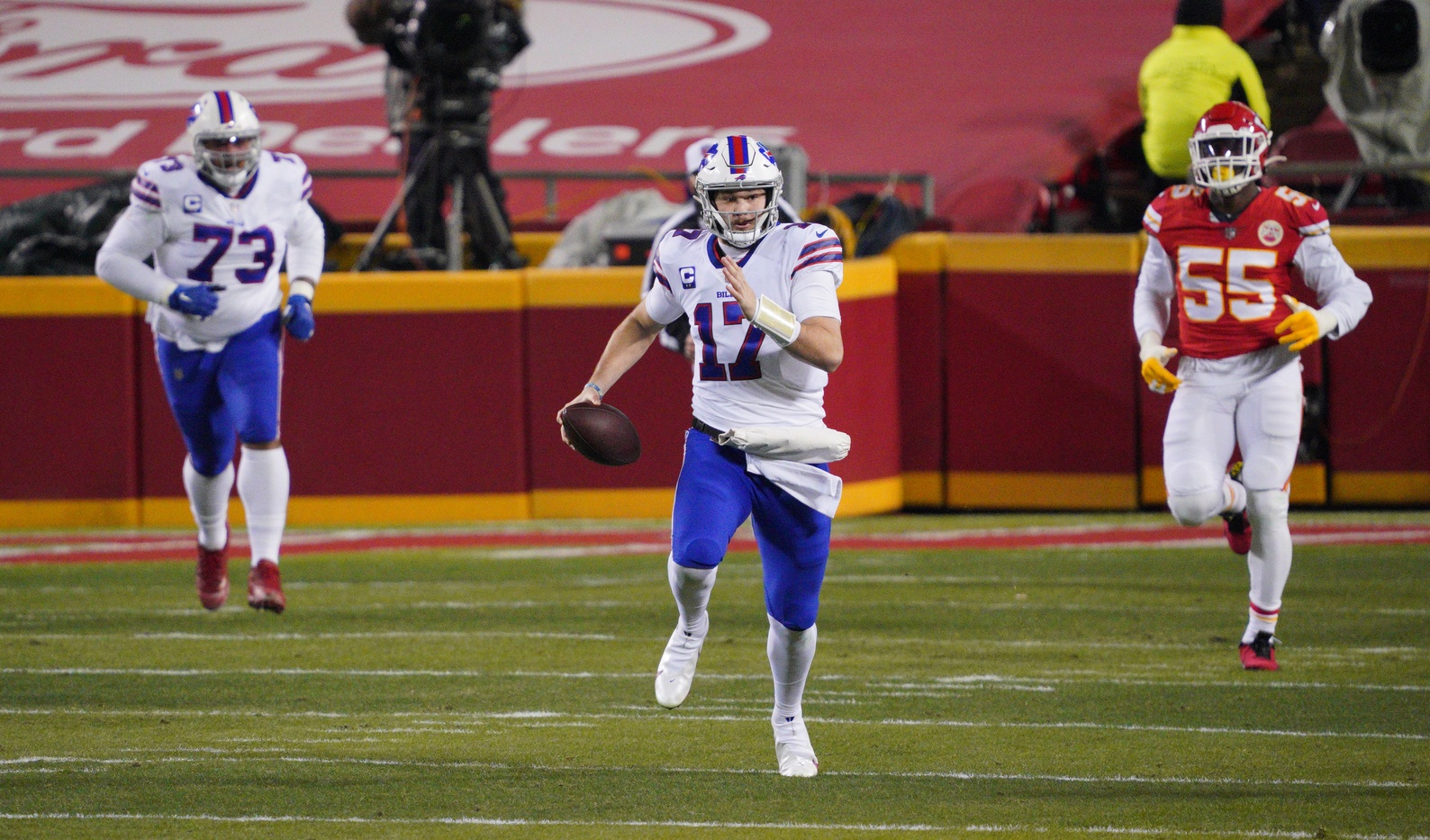
Skeptics will consider Allen a prime regression candidate after his unbelievable 2020 season, but the numbers paint a different picture. His league-leading 23.3 expected fantasy points per game and modest 6.5% passing touchdown rate (seventh) are tell-tale signs that his production should remain stable. Facing the league’s second-easiest strength of schedule for quarterbacks (and the easiest schedule for the first five weeks) also makes Allen a sure-fire bet to easily meet his fantasy draft day cost.
The Bills quarterback has the luxury of playing in an offense that loves to pass the ball. Buffalo threw at the sixth-highest rate on early downs (61%), averaging nearly 32 passing attempts per game (third).
If all else fails, Allen has his legs to fall back on. Since entering the NFL, he has compiled at least 400 rushing yards and eight rushing touchdowns in each of his three seasons.
Allen can further expand his chemistry with Stefon Diggs, which is a terrifying thought for opposing defenses. The former Viking led the league in games with at least 90 receiving yards during the regular season (10) and finished second overall in PFF receiving grade (90.9). Diggs also finished fifth in yards per route run (2.5) and third in fantasy points per game (20.6). That was all in Year 1 with Allen following a truncated offseason.
Diggs’ 29% target share doesn’t project to be going anywhere, and so drafters should have the utmost confidence in selecting him as a top-three wide receiver and as a backend first-rounder in PPR formats.
Even so, there’s room for his red-zone role to grow. Among all of Diggs’ accolades, he was mortal when targeted in the red zone (68.9 PFF grade, 42nd). He also commanded just as many end-zone targets as rookie Gabriel Davis, which is odd because Diggs is the clear alpha.
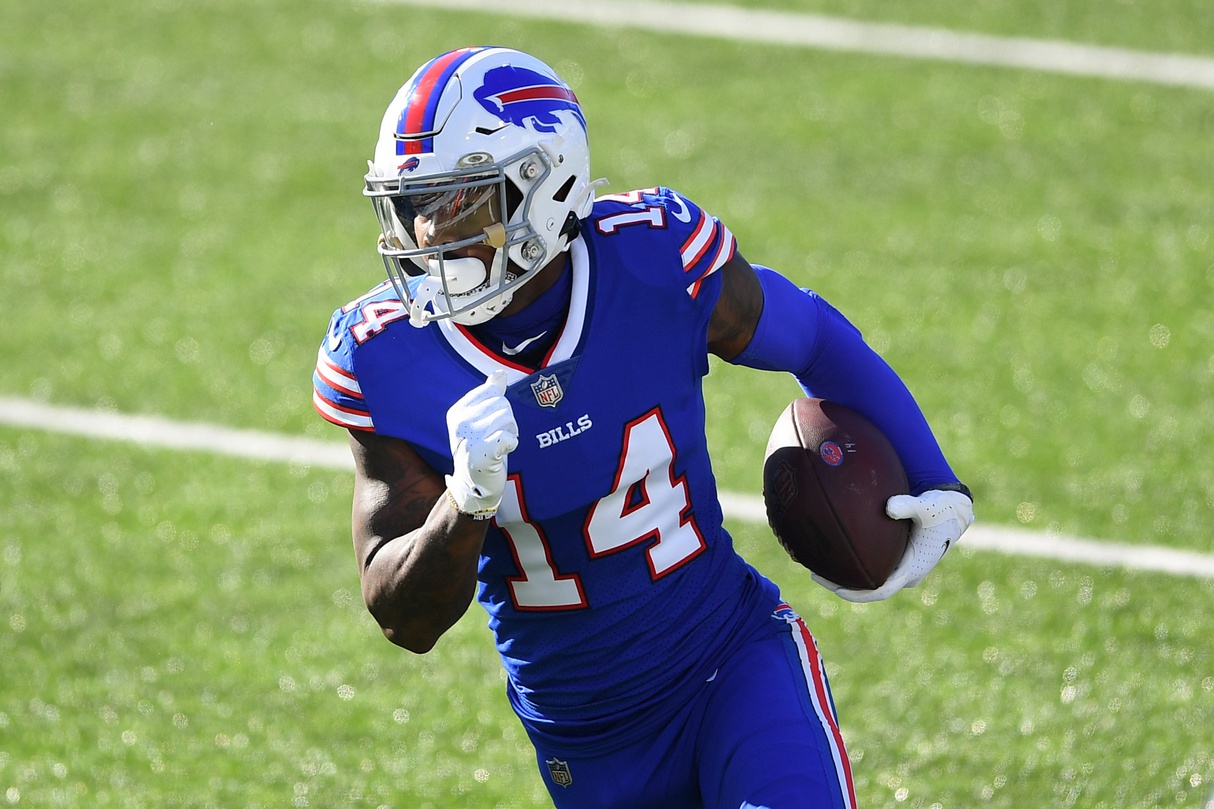
Unless the 2020 fourth-rounder takes a big leap in Year 2 — currently the No. 4 option on the depth chart — expect Diggs and Allen to lock down their connection in the red zone in 2021.
The entire passing game will be prolific, so snagging any ancillary wide receivers is a sharp move for fantasy drafts. They are all being vastly undervalued (ADPs outside the top 125 overall and the top 55 wide receivers).
However, be sure to not overlook the Bills' running backs despite how atrocious the team's backfield was last season. Uber-efficient offenses create more scoring opportunities for all players, including a team’s running game.
BREAKOUTS
RB ZACK MOSS
Zack Moss is in the driver’s seat to emerge as the RB1 in the Bills' backfield after averaging 11.1 fantasy points per game in his eight games where he saw double-digit touches. In his healthy starts, the team averaged more rushing attempts per game (25 versus 22), so it’s possible his absence contributed to Buffalo being so pass-heavy.
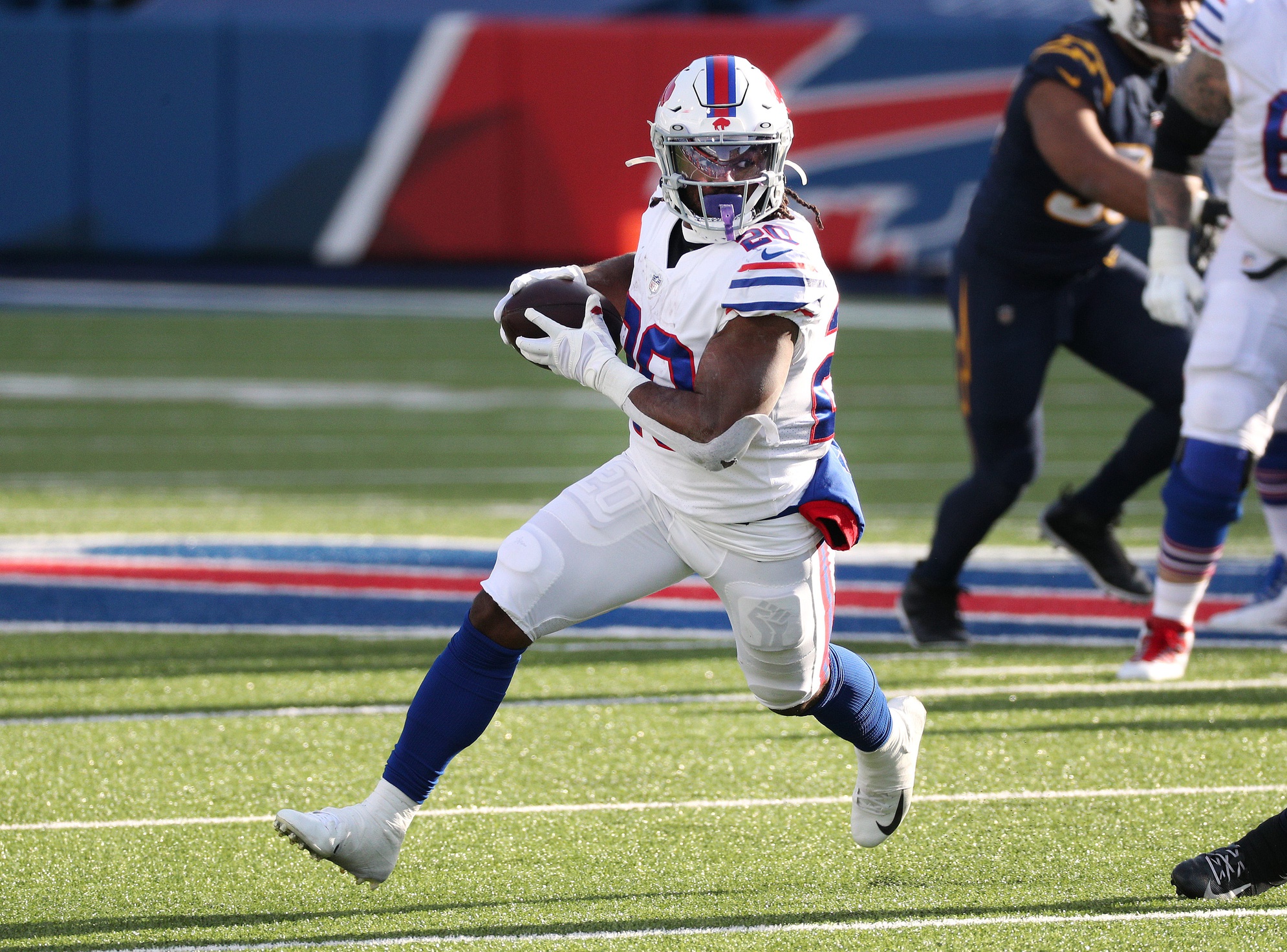
Regardless, it ended up being an overall lackluster season for all Bills running backs, as they finished 29th in cumulative fantasy points scored at the position. The unit would have ranked even worse if it weren't for a random RB9 finish from third-string running back Antonio Williams in Week 17. Even so, drafters should want pieces of high-powered offenses, and Moss is one of the cheapest parts available (RB35 ADP).
The team’s success will create scoring opportunities for Moss. When available last year, he got the nod in terms of goal-line touches over the rushing quarterback. He had more carries inside the five-yard line (eight versus six) and inside the 10-yard line (14 versus nine) than Allen. The Bills quarterback has also performed well above expectation in the rushing touchdowns department over the past two seasons, leaving some room for regression that could benefit Moss.
The second-year running back also has the chance to completely neutralize Devin Singletary’s role as the team’s primary back on third downs. Moss was PFF’s highest-graded pass blocker (89.9) on true pass sets, which could lead to more third-down snaps. Singletary ranked 45th with a 45.2 grade.
Just be wary of Buffalo's tough early-season schedule. With matchups against the Pittsburgh Steelers, Miami Dolphins and Washington Football Team (top-13 run defenses in 2020) followed by three plus-matchups, Moss seems destined to be a late-bloomer in 2021.
VALUES
WR Cole Beasley
Cole Beasley can’t continue to be drafted as the WR64. Understandably, his ADP has fallen due to off-field concerns, but he’s going to be a supreme value if his situation clears up by the time the season kicks off. Last season, Beasley finished 33rd in fantasy points per game and 27th in total receiving yards (967). From the slot, Beasley ranked No. 1 in the NFL in yards (948) and second in PFF receiving grade (90.8).
Considering he’s almost guaranteed to reprise his 88% slot snap rate from 2020, Beasley provides any roster a solid floor with some surprising upside in a pass-first offense. He posted two top-three finishes last season.
WR Emmanuel Sanders
With Sanders being 34 years old, it’s tough to get too excited about him. But there’s no denying he has fantasy value in a high-powered offense. His numbers last year don’t necessarily indicate his production is about to fall off a cliff, either.
Sanders finished 22nd in target rate per route run (22%) and 31st in yards per route run (1.84) among wide receivers with at least 50 targets while playing with a rotating carousel of quarterbacks for the New Orleans Saints. In his 13 healthy games, he averaged 12.6 fantasy points per game (37th).
Reports out of Bills’ camp claim that Sanders is working ahead of Gabriel Davis on the depth chart. Sanders would also see a massive boost if Beasley were no longer in the picture because he’d most likely cannibalize the vacated snaps and targets from the slot.
SLEEPERS
WR Gabriel Davis
Gabriel Davis fans weren’t thrilled when the Buffalo Bills opted to sign veteran free agent Emmanuel Sanders to a one-year deal for 2021. It looked like it was wheels up for Davis as a breakout candidate after the team released John Brown, but the Sanders signing has people pumping the brakes.
But while Sanders may delay the breakout, it’s far from being completely shut down.
Davis’ downfield archetype — 17.3-yard average depth of target (aDOT), seventh-highest in the NFL — is the complete opposite of Sanders’ recent usage. The veteran hasn't posted an aDOT higher than 13.0 yards since 2016.
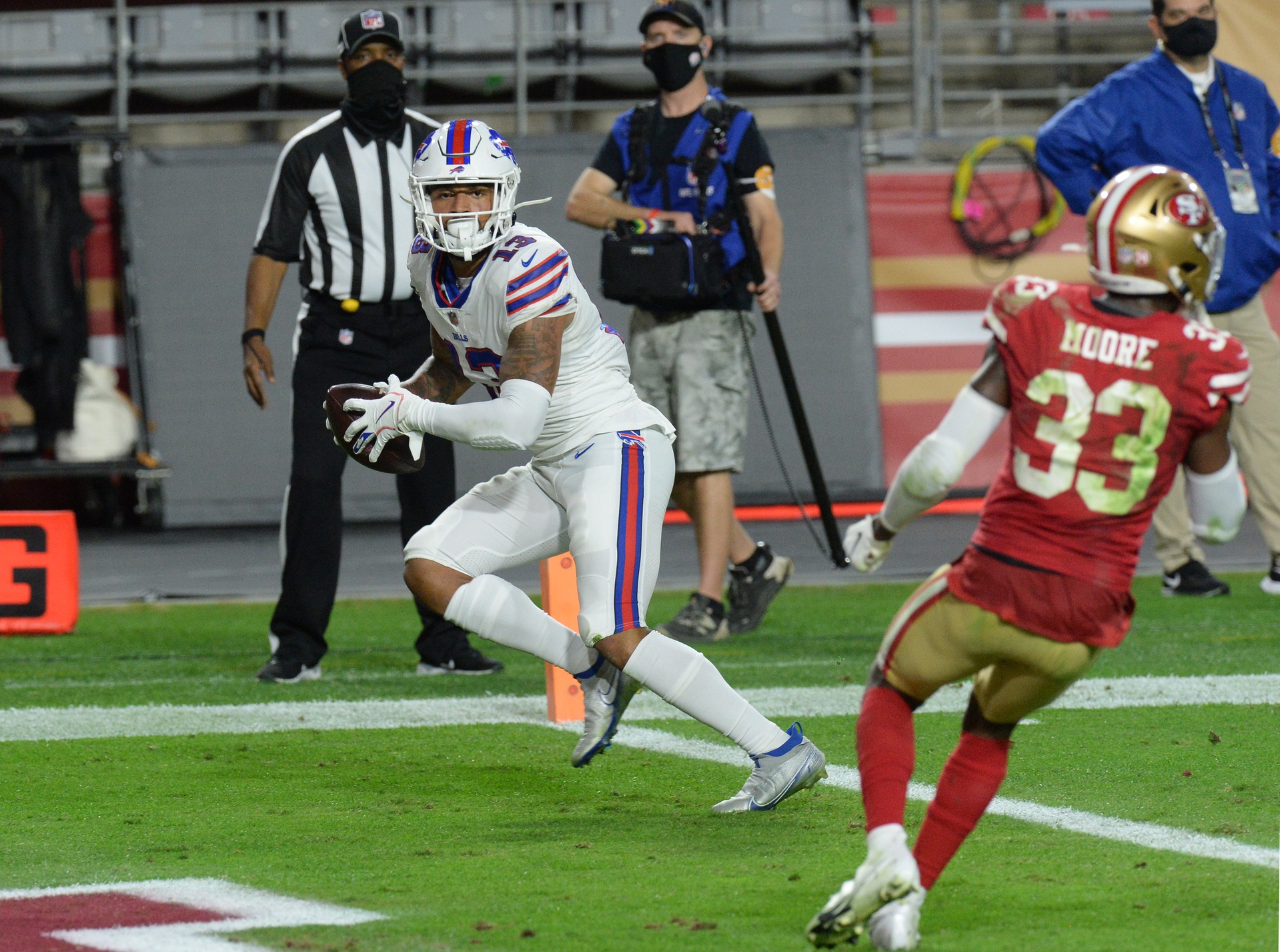
Davis still has a path to a second-year breakout. He was PFF’s second-highest-graded rookie wideout on targets 20-plus yards downfield (98.8), and his overall volume of high-value targets was utterly impressive as a rookie.
The former UCF standout finished with just two fewer deep targets than Stefon Diggs and posted an identical 25% end-zone target share. His air yards share (19%) was better than established veteran teammates in Brown and Cole Beasley.
The rookie put up at least 68 receiving yards or scored a touchdown in nine games. He ended the season strong, amassing192 receiving yards on only six receptions across his last two games before injury. That netted him a 90.7 PFF receiving grade.
Allen proved last season that he can support multiple fantasy wide receivers, as his guys scored more fantasy points than any other team's group. Savvy fantasy managers should be all about trying to acquire the team’s big-play wideout. It won't be surprising if he hauls in double-digit touchdowns (he scored seven last year) in the Bills’ high-powered offense.
Just be patient if the team relies on the older veterans to start the season. It will only be a matter of time until Davis makes his impact. Buffalo ran 11 or 10 personnel (87%) more than any team last season, so Davis can still be involved in the offense, even as the No. 4 on the depth chart.
RB Devin Singletary
Zack Moss and Devin Singletary were huge disappointments last year. Singletary finished the 2020 regular season as the RB32 and Moss as the RB48 (he missed three games).
But their ADPs have fallen so dramatically (Singletary is routinely available in the 16th round) that both have become value propositions. Breakout running back performances often tend to emerge from ambiguous backfields, and that’s exactly what Buffalo has to offer.
Moss appears like the No. 1 runner, but teams can make strange decisions. They can opt to follow a hot-hand approach, which could lead Singletary to a larger role than Moss advocates (like myself) would care to admit.
Moss also has a track record of injuries from his college days to his first year in the NFL, so there’s a non-zero chance he misses games in 2021.
That would promote Singletary to clear RB1 status, as we saw last year when Moss missed time.
In those five contests, Singletary saw a 75% snap share and nearly 77% of the team’s running back opportunities.
Devin Singletary | 2020
| Backfield Duties | Fantasy PPG | Snap % | Expected fantasy PPG | Touches per game | Carries per game | Team RB opp. share |
| W/ Zack Moss | 8.6 | 56% | 9.5 | 11.1 | 8.8 | 52% |
| W/o Zack Moss | 10.1 | 75% | 13.0 | 14.6 | 11.0 | 77% |
He’d also likely see positive regression in terms of touchdowns after finishing last season with just 8% of his fantasy points from scores — worst in the league.
Scoring has been the major missing component to Singletary’s fantasy appeal. Otherwise, he’s been efficient churning out yardage. He ranks fifth in 15-plus-yard rushes (23) and sixth in missed tackle rate forced per touch (25%) since 2019.
That's not half bad for a player with an RB46 ADP who also happened to finish sixth in routes run (318) and 16th in receptions (38) at the position in 2020.
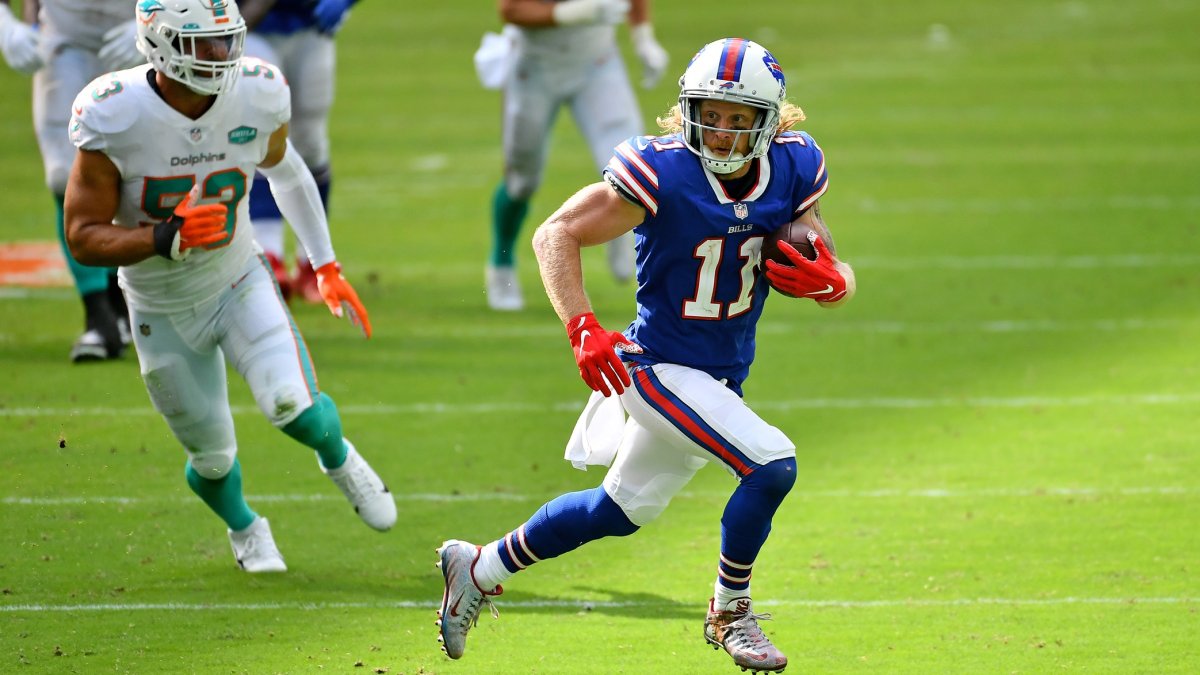



 © 2025 PFF - all rights reserved.
© 2025 PFF - all rights reserved.